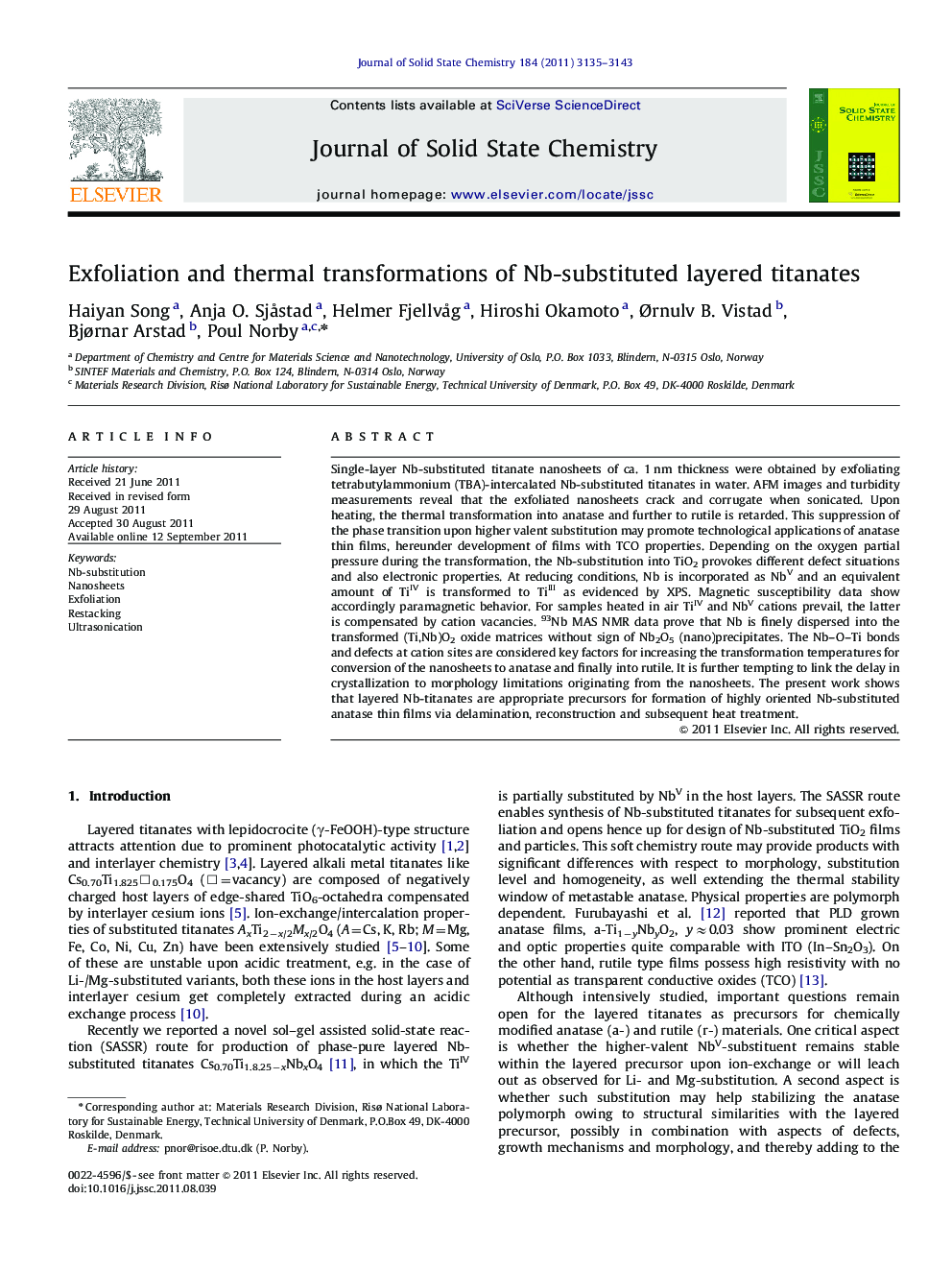| Article ID | Journal | Published Year | Pages | File Type |
|---|---|---|---|---|
| 1330516 | Journal of Solid State Chemistry | 2011 | 9 Pages |
Single-layer Nb-substituted titanate nanosheets of ca. 1 nm thickness were obtained by exfoliating tetrabutylammonium (TBA)-intercalated Nb-substituted titanates in water. AFM images and turbidity measurements reveal that the exfoliated nanosheets crack and corrugate when sonicated. Upon heating, the thermal transformation into anatase and further to rutile is retarded. This suppression of the phase transition upon higher valent substitution may promote technological applications of anatase thin films, hereunder development of films with TCO properties. Depending on the oxygen partial pressure during the transformation, the Nb-substitution into TiO2 provokes different defect situations and also electronic properties. At reducing conditions, Nb is incorporated as NbV and an equivalent amount of TiIV is transformed to TiIII as evidenced by XPS. Magnetic susceptibility data show accordingly paramagnetic behavior. For samples heated in air TiIV and NbV cations prevail, the latter is compensated by cation vacancies. 93Nb MAS NMR data prove that Nb is finely dispersed into the transformed (Ti,Nb)O2 oxide matrices without sign of Nb2O5 (nano)precipitates. The Nb–O–Ti bonds and defects at cation sites are considered key factors for increasing the transformation temperatures for conversion of the nanosheets to anatase and finally into rutile. It is further tempting to link the delay in crystallization to morphology limitations originating from the nanosheets. The present work shows that layered Nb-titanates are appropriate precursors for formation of highly oriented Nb-substituted anatase thin films via delamination, reconstruction and subsequent heat treatment.
Graphical abstractLayered Nb-titanates are appropriate precursors for formation of highly oriented Nb-substituted anatase thin films via delamination, reconstruction and subsequent heat treatment.Figure optionsDownload full-size imageDownload as PowerPoint slideHighlights► Single layer Nb-substituted nanosheets were obtained by exfoliation of layered titanates. ► Nb(V) successfully introduced into anatase and rutile solid solutions. ► Anatase obtained from reconstructed nanosheets exhibit enhanced thermal stability. ► Oxygen partial pressure influences the valence of Nb in heat-treated samples. ► Deposition of oriented thin Ti(Nb)O2 layers by spray coating was demonstrated.
